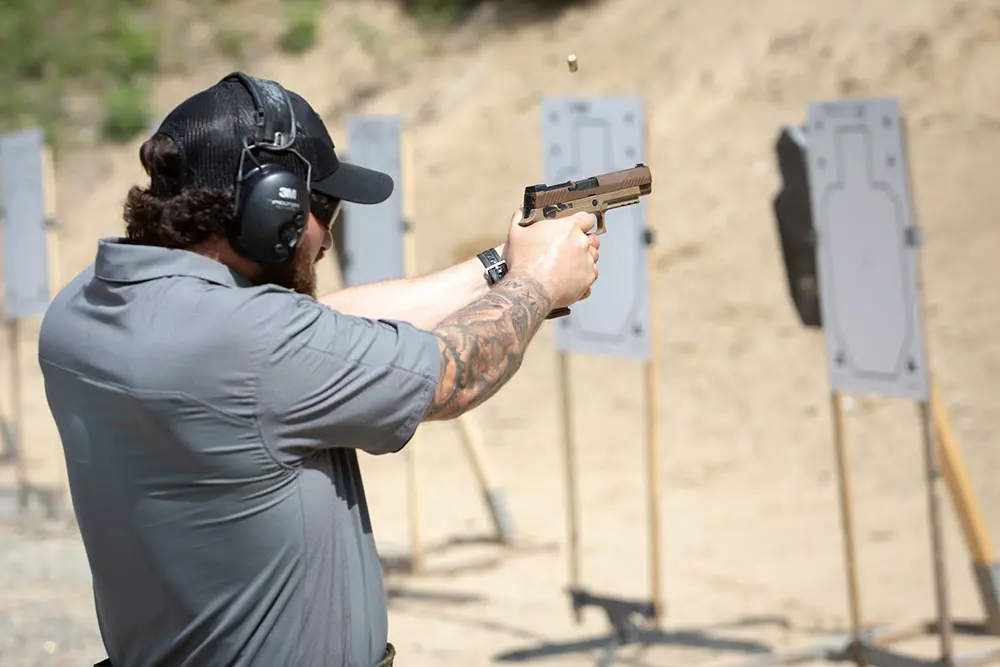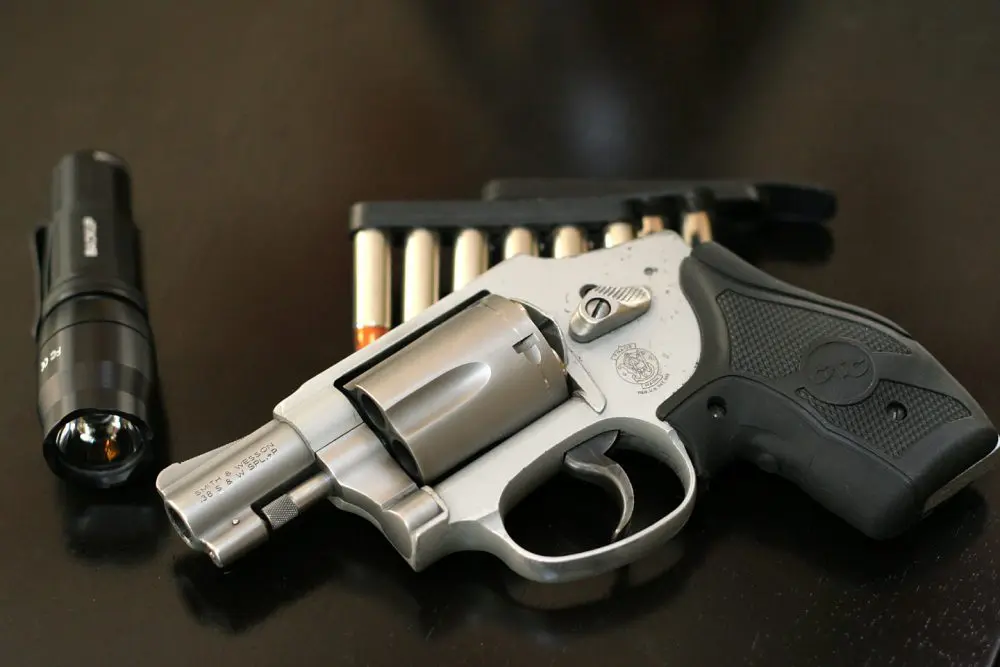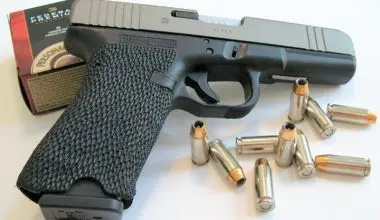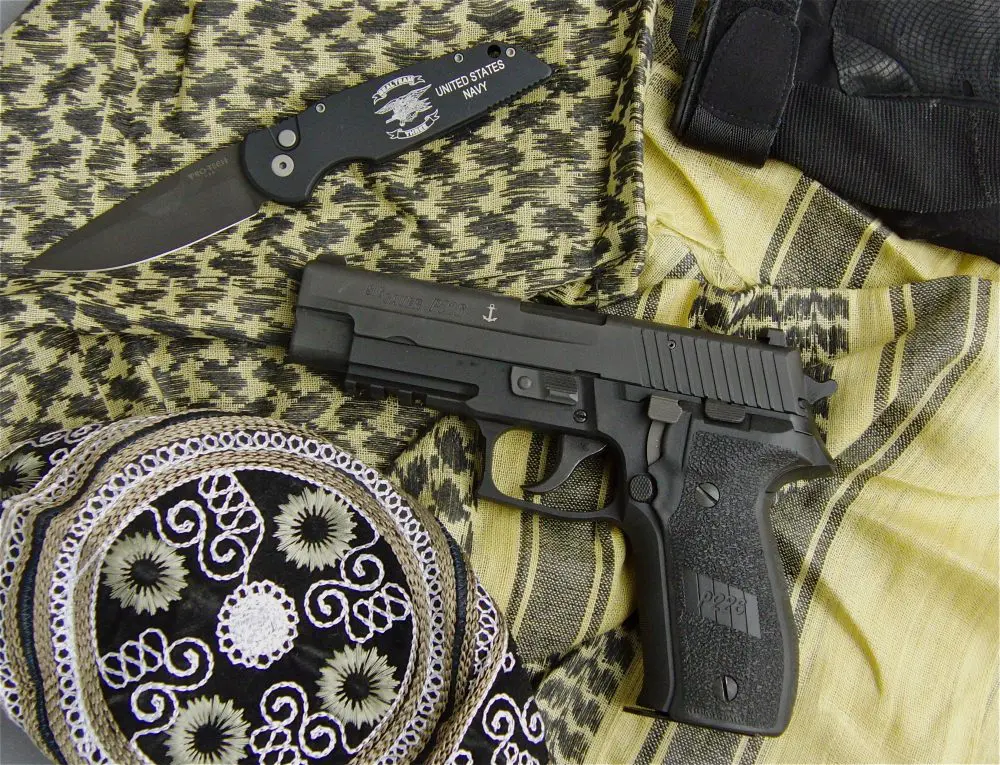
Before the mass migration to semiauto pistols, many prominent counterterrorist/hostage-rescue teams started life with revolvers.
For example, LAPD’s SWAT team confronted crime with Smith & Wesson K 38s. France’s GIGN packed Manurhin .357s. The Dutch Marines BBE hammered Moluccan terrorists with two-inch-barreled Colt Lawman .357s. The FBI’s Hostage Rescue Team holstered S&W M19 .357s. Germany’s GSG9 operators had the option of fighting with revolvers, and some did so during the Lufthansa rescue in Mogadishu.
Early on, the U.S. Navy’s Development Group also employed stainless steel S&W M66 wheel guns for maritime training, where they beat each other up with wax bullets.
It is clearly evident that today semiautos dominate military, law enforcement and civilian defense applications to the degree that wheel guns have almost become relics of the past.
Nevertheless, the revolver is being kept alive through Action Shooting matches and brilliant competitors like Jerry Miculek and other traditionalists who continue to advocate for the breed.
Table of Contents
SECOND AMENDMENT WARS
With this year’s push for emotionally and politically based gun control, bans and universal background checks, and the potential for registration and outright confiscation of firearms—particularly semiautomatic firearms— on the horizon, might the revolver experience a renaissance in certain locales?
In New York State, handguns are now limited to seven rounds. Perhaps the evil geniuses who cooked up this limitation were thinking of the 1911 single-stack pistol. However, with the advent of higher-capacity revolvers, citizens coping with such baseless restrictions may by default or preference consider the higher-capacity versions of the old “equalizer” to satisfy their shooting requirements.
SMITH & WESSON 21st CENTURY REVOLVER
With these threats in mind, S.W.A.T. Magazine decided to take another look at the Smith & Wesson Model 327 TRR8—an eight-shot .357 Magnum from the S&W Performance Center—for filling any gaps created by these proposed unconstitutional laws.
With a one-third increase in payload, the 327 duplicates the firepower of the 1911 and is therefore necessarily large. However, the “N” framed TRR8 with Scandium frame weighs only 36.3 ounces unloaded.
Surprised by its perceived lightness, the Scandium alloy lops off at least six to eight ounces that a similar steel gun would exhibit. Every other component on the gun, such as its barrel and cylinder, is stainless steel. Obviously, this positive attribute quickly changes when it is prepared for battle.
Charge it with eight rounds of 125-grain jacketed hollow points (JHP), trick it out with a rail-mounted Trijicon RM04 amber dot Dual-Illuminated sight with LaRue quick-release base and Streamlight TLR-2 light/laser combo, and its go-to-war weight climbs to 46.7 ounces.
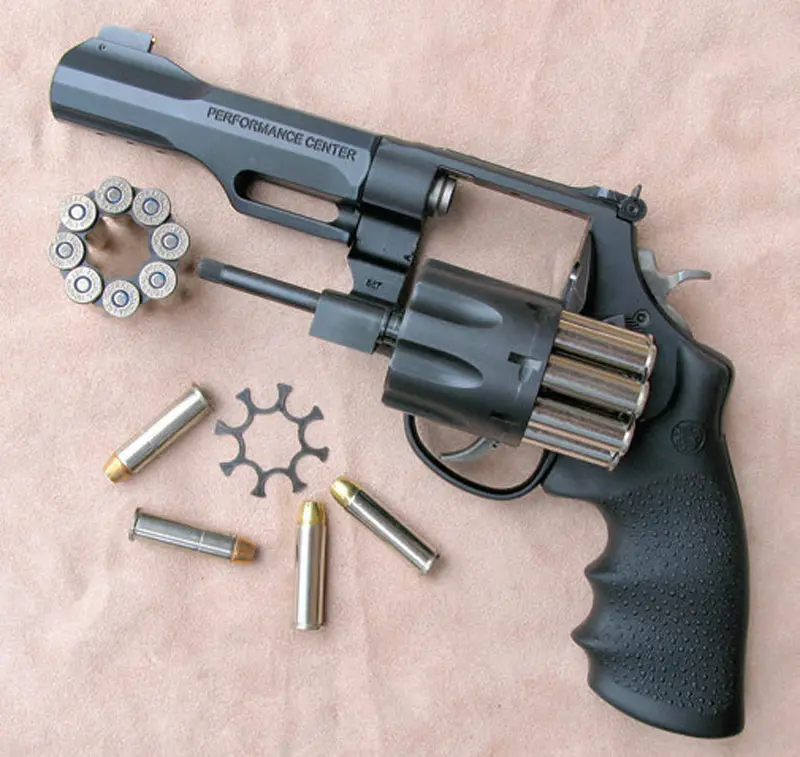
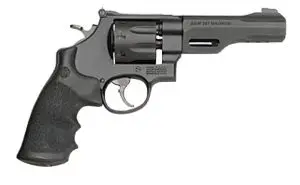
NOT YOUR FATHER’S REVOLVER
Obviously, this is not your Father’s revolver. It is not only unique looking, but also has many unusual features. Commensurate with its individuality is a healthy price tag, which products from the S&W Performance Center generally command. This eight-shot revolver is shipped in the near-ubiquitous padded plastic lockable case. Inside are two removable steel Picatinny rails, three full-moon clips, locking action keys, and a sample expended shell case. A cable lock is included to augment the keyed internal safety that blocks the trigger when engaged. A visible small metal wing appears next to the hammer when the safety is applied. Hogue rubber grips with palm swells and finger grooves help absorb recoil.
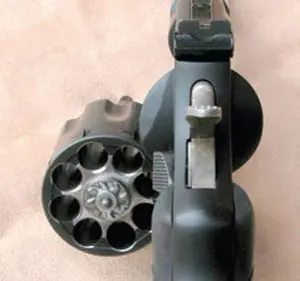
Trigger pull weight for double action (DA) is approximately ten pounds and 2.5 pounds for single action (SA). The DA is long and smooth with no stacking, and the SA is wicked short, crisp and light. The 327 has an adjustable trigger stop for overtravel. The firing pin is floating and part of the frame.
The McGivern gold bead front sight doesn’t grab your attention like a fiber optic, but it is prominent and works well in daylight. I like it because it’s nostalgic and served the Montanan well in his record-establishing career.
Unusual features include a two-piece shrouded and conventionally rifled barrel, precision forcing cone with top strap shielding plate, chamfered charge holes, optimal barrel and cylinder gap, ball and detent cylinder lockup, and black glass bead finish. It points beautifully.
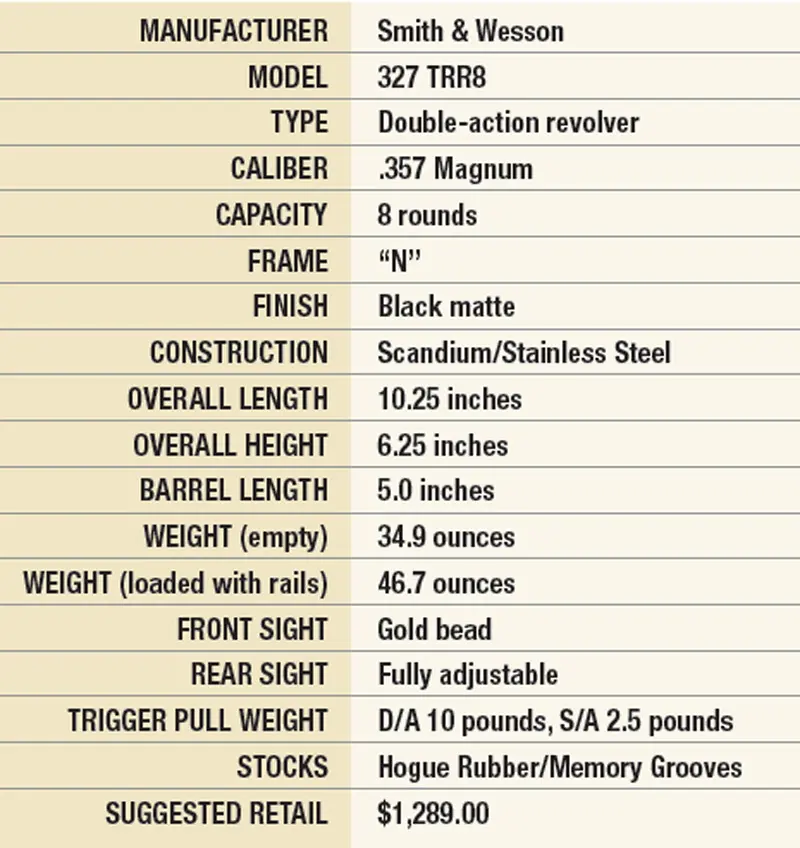
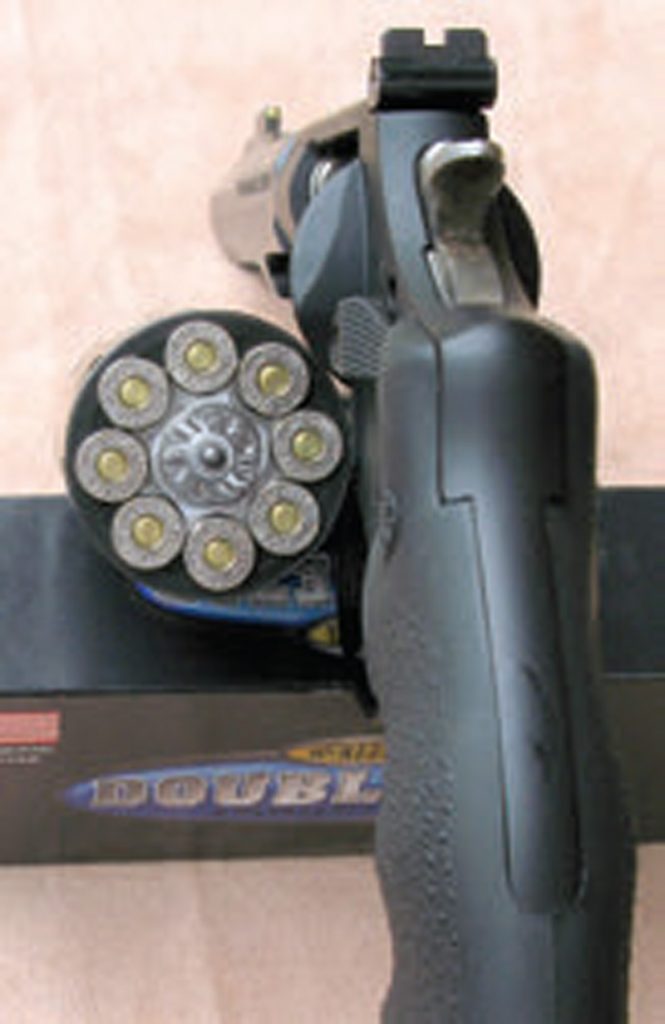
So we have capacity equivalent to that of the iconic 1911A1 pistol in a slightly larger profile. What advantages does the TRR8 offer?
RELIABILITY DEBATE
While no firearm is 100% reliable, modern semiautomatic pistols appear to have become instruments to bet your life on. However, I believe the revolver still has an edge in the reliability department.
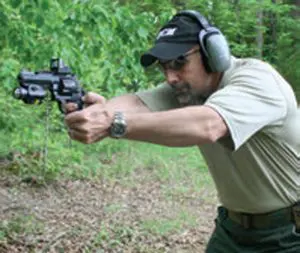
Although double-action pistols that mimic a revolver’s action have a “restrike” capability, they are slapping the same round, which may have a dud primer. Refunctioning the pistol requires time-robbing immediate action, whereas the wheel gun simply requires a second pull of the trigger to rotate up a fresh cartridge. Revolvers also function with fewer moving parts, which means fewer things can go wrong.
Cylinder guns usually handle more powerful cartridges. Bullet shape is not critical for feeding, since the rounds are already chambered. Fixed barrels usually deliver more consistent accuracy as long as cylinders and forcing cone are indexed. Revolvers are not sensitive to a weak grip or “limp wristing,” which results in stoppages with some semi-autos. Unlike semi-auto pistols, the revolver’s front sight does not trombone during the firing cycle and is easier to track.
Certainly, revolvers can fail. You can short stroke its double-action trigger and temporarily lock up the gun. The most time-consuming stoppage occurs when the star-shaped ejector slips over the round’s rim and the cartridge has to be punched out with a rod.
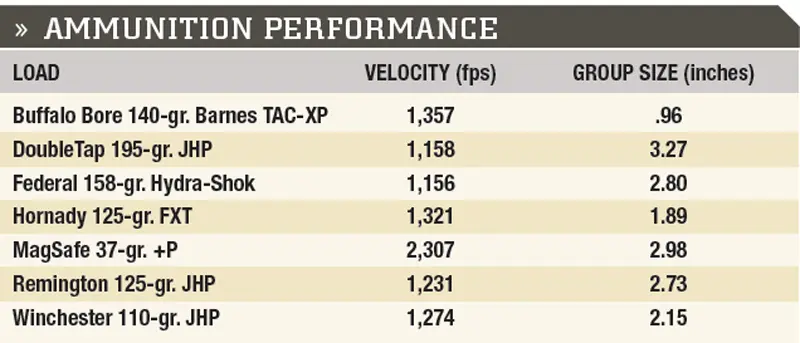
Inadequately crimped rounds will sometimes result in bullets drifting forward under heavy recoil and locking up the cylinder. This will render the piece inoperable until the round is removed by unorthodox means. Unprotected ejector rods can be bent by blunt force.
Reloading, even with speed loaders and full- or half-moon clips, is generally slower than recharging a pistol. However, the previously mentioned Jerry Miculek has fired 12 revolver rounds in 2.9 seconds—with a reload!
RANGE TIME
Twenty-five yard groups fired off a HySkore pistol rest with iron sights— and its rumored more accurate shrouded barrel—ranged from excellent to mediocre. Bullet weights spanned the gamut from 37 to 195 grains.
Accuracy honors of 0.96 inch went to Buffalo Bore’s 140-grain Barnes XPD ammunition at a high individual velocity of 1,446 feet per second (fps) and 650 foot pounds of muzzle energy. However, this load exhibited heavy recoil and considerable muzzle flash.
The velocity king was no surprise with ultra-flyweight MagSafe 37-grain “SWAT” rounds scorching the sky screens at a high individual velocity of 2,346 fps. Muzzle blast and flash were dramatic, but recoil was quite mild.
Frangible ultra-high-velocity handgun bullets of this nature are usually shallow penetrators as MagSafe intends, but they can macerate bones near the skin’s surface and defeat some body armor. Usually, there’s a lot of surface wounding and blood, but these lightweights may not reach deeper vital organs to put the threat down. These are maximum-pressure loads, and spent cases had to be tapped out.
The heavyweight of the crowd was DoubleTap 195-grain Equalizer Defense JHP, which easily eclipsed 1000 fps but produced clouds of gray smoke. Ignition was 100% for all rounds fired.
My shooting buddy dumped octet after octet of a variety of .357 rounds into a combat target at seven and ten yards. Tricked out with Trijicon’s RMR optic and the Streamlight light/laser combo’s extra weight, recoil and muzzle rise were no more than that of a largecaliber defensive pistol.
He readily realized rapid-fire hits to the target’s 4×6 vitals box with the Model 327. I echoed his experience when I lashed out at a steel torso plate from ten yards. As I rolled the trigger on a cylinder full of Hornady 125-grain FXTs, there was lots of drama at the muzzle, and the higher velocities of this fusillade dimpled and shallowly cratered the soft steel plate.
With the RMR installed, hits on 100- yard steel silhouette targets occurred with boring regularity.
BLACK FLAMINGO HOLSTERS
Safariland makes a slick competition holster for the TRR8, but there aren’t many scabbards available for this piece.
Lucas DeBruhl of Black Flamingo Tactical holsters, a rising manufacturer of custom holsters in Falmouth, Virginia, volunteered to create a carry system for the big Smith. A tinkerer by nature, Lucas is self-taught and by word of mouth only has gotten the U.S. Secret Service plus local, state and municipal police members to employ his designs. Lucas is highly motivated to produce the best possible product and his company is currently small enough to give his customers personal attention.
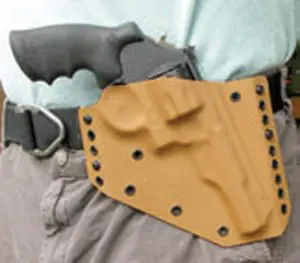
DeBruhl uses .060-inch Kydex and polishes the interior to reduce finish wear and enhance draw smoothness. Security is Level 1, but quite good and primarily relies on a glove-like fit around the weapon to retain it. Because of the revolver’s relatively long barrel length, I opted for a crossdraw rig. It was a prototype but, in spite of its size, it was comfortable, especially while driving.
CONCLUSIONS
The Model 327 TRR8 is suitable for personal defense, survival, and hunting light to medium game with a very wide range of available bullet weights and designs. Unless you are a big person, the large Smith is not easily concealed, but would make an excellent open carry, car or house gun.
Parked in a leg-drop holster, this eight shooter could acquit itself well as a police SWAT secondary or backup gun. With training and its full-moon clips, it can be reloaded almost as quickly as a semiauto pistol. If “high-capacity magazines” are banned, the highercapacity wheel gun may, because of its firepower and versatility, come into its own—again.
